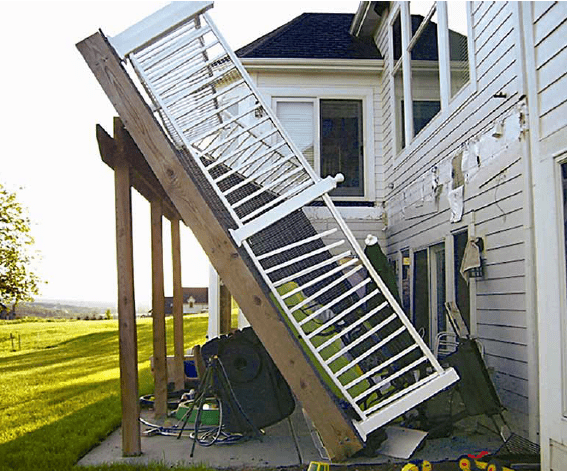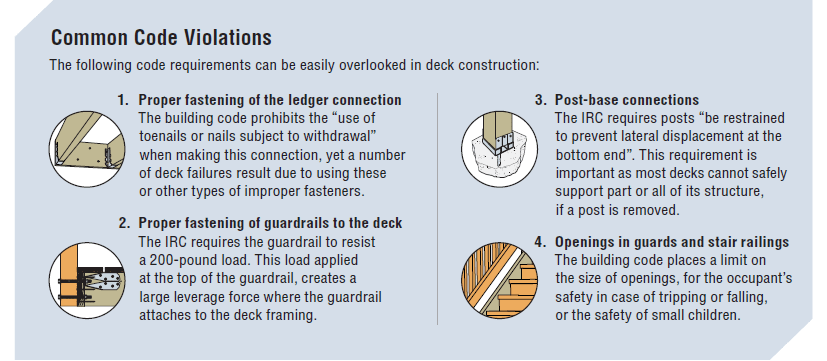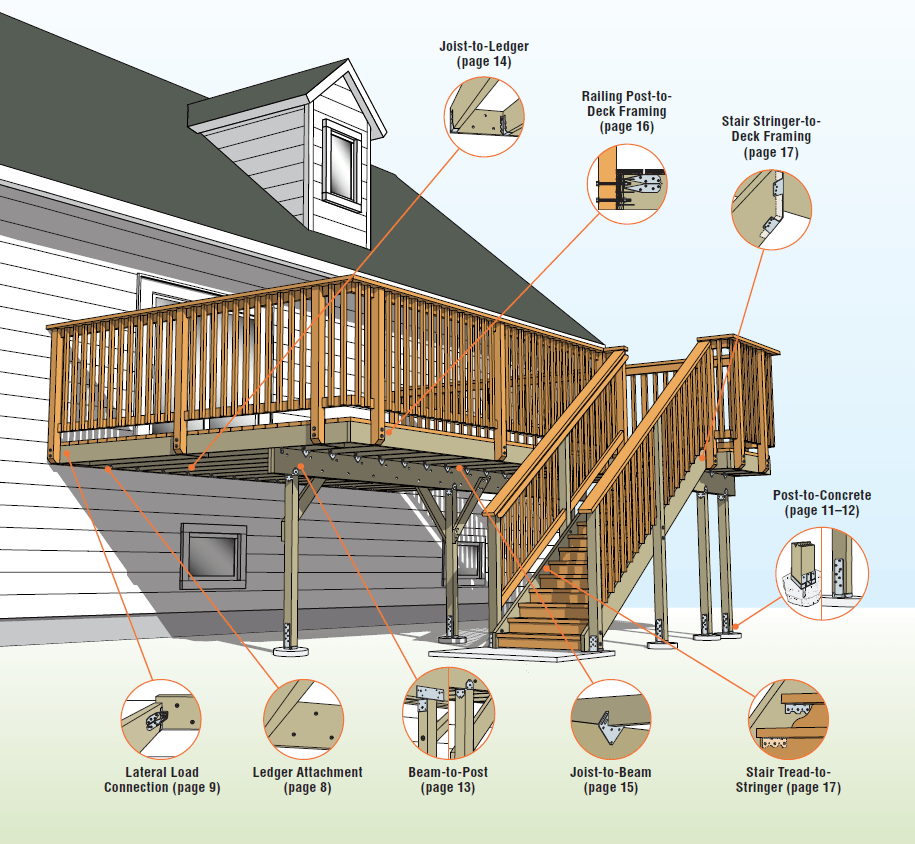Are you a Do-It-Yourself renovator with an eye for Deck Design? Planning on saving on costly contractor fees by gettin’ er done yourself?
If you answered YES to both of these questions, then we strongly advise you spend an hour or so reading through this extremely useful Deck Connector and Fastening Guide from industry specialists Simpson Strong-Tie.
The Deck Connector & Fastening Guide is designed to ensure that you build a structure that will not only be safe and strong but also meet the all-important building code requirements specific to where you live. In this post, you’ll find useful visual aids, referenced page numbers for where to find more info – and help identifying the type of Connectors and Fasteners that you’ll need to use to build your deck the right way.
We supply a full range of Simpson Strong-Tie products available in-store or by Special Order – and of course, we can help you choose the right Decking Products too.
We recommend that before building any outdoor structure, that you contact your local municipality to check whether or not you need a building permit and heed the advice offered by the experts at Simpson Strong-tie because as the picture below shows – improperly built decks can be dangerous!
Improperly built decks can be dangerous
More than a million decks are built and replaced each year in North America. While decks are a popular feature of many homes, the construction and safety of decks have become a real concern within the building industry. Improper deck building has resulted in a growing number of deck failures and related injuries and deaths. According to Don Bender, the director of the Composite Materials and Engineering Center at Washington State University, the deck is the most dangerous part of the house.
Washington State Magazine’s article Making Decks Safer reports…
“Decks cause more injuries and loss of life than any other part of the home structure. Except for hurricanes and tornadoes, more injuries may be connected to deck failures than all other wood building components and loading cases combined.”
Complying With Building Code
While decks are required to meet certain code standards and load capacities, it’s estimated that of the 40 million existing decks, only half are code compliant — leaving 20 million decks that need to be rebuilt or retrofitted. To help design and building professionals build code compliant, safe decks, Simpson Strong?Tie has created this Deck Connection and Fastening Guide. The guide focuses on the critical connections involved in deck construction and what the code requires for these areas. It is intended to help designers, contractors, inspectors and do-it-yourselfers ensure that their decks are properly constructed per the International Building Code® (IBC) and International Residential Code® (IRC). The guide includes a complete deck connector system that covers all the hardware needs for deck construction and references the code to ensure it meets current requirements.
Code Concerns
Do Decks Really Need to Meet Code Requirements?
Because they look relatively simple to build, many people do not realize that decks are structures that need to be designed to adequately resist certain stresses. Like a house or any other building, a deck must be designed to support the weight of people and objects placed on them, as well as lateral and uplift loads that can act on the deck as a result of occupant movement, wind or seismic activity.
The 2009/2012 versions of both the IBC and IRC contain language outlining the general design requirements of structures. This excerpt from the 2009/2012 IRC (Section R301.1) represents a summary of the intent of both codes:
“The construction of buildings and structures in accordance with the provisions of this code shall result in a system that provides a complete load path that meets all requirements for the transfer of all loads from their point of origin through the load-resisting elements to the foundation.”
The concept of a complete or continuous load path refers to a series of solid connections within the structure of a deck that transfer load through its frame to the ground or adjacent, supporting structure (commonly a building). This same principle is applied to the design of all types of wood frame buildings. This continuous load path is created by using a system of structural connectors and fasteners to connect the wood members together.
Critical Deck Connectors
For a complete overview of Deck Design – read or download the Deck Connection & Fastening Guide below – and remember, if you get stuck, call us for free advice. You can also view this guide online – with instructional videos at safestronghome.com
Excerpts of this blog post are taken from Simpson Strong-Tie Deck Connection & Fastening Guide







